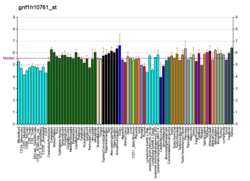| MAFA | |||||||||||||||||||||||||||||||||||||||||||||||||||
|---|---|---|---|---|---|---|---|---|---|---|---|---|---|---|---|---|---|---|---|---|---|---|---|---|---|---|---|---|---|---|---|---|---|---|---|---|---|---|---|---|---|---|---|---|---|---|---|---|---|---|---|
| |||||||||||||||||||||||||||||||||||||||||||||||||||
| Identifiers | |||||||||||||||||||||||||||||||||||||||||||||||||||
| Aliases | MAFA , RIPE3b1, hMafA, MAF bZIP transcription factor A, INSDM | ||||||||||||||||||||||||||||||||||||||||||||||||||
| External IDs | OMIM: 610303; MGI: 2673307; HomoloGene: 65867; GeneCards: MAFA; OMA:MAFA - orthologs | ||||||||||||||||||||||||||||||||||||||||||||||||||
| |||||||||||||||||||||||||||||||||||||||||||||||||||
| |||||||||||||||||||||||||||||||||||||||||||||||||||
| |||||||||||||||||||||||||||||||||||||||||||||||||||
| |||||||||||||||||||||||||||||||||||||||||||||||||||
| Wikidata | |||||||||||||||||||||||||||||||||||||||||||||||||||
| |||||||||||||||||||||||||||||||||||||||||||||||||||
Transcription factor MafA is a protein that in humans is encoded by the MAFA gene. [5] It is a member of the Maf family of transcription factors. [6]
Contents
MAFA is phosphorylated sequentially on four serine/threonine residues by GSK-3 kinase. [7] These phosphorylations activate MAFA transcription and trigger its degradation in the proteasome. Altering these post-translationnal modifications leads to severe pathological consequences. Mutation of these residues is perinatally lethal in mice, [8] and mutation of the Ser64Phe priming site was reported to induce familial diabetes mellitus and insulinomatosis in humans. [9]




